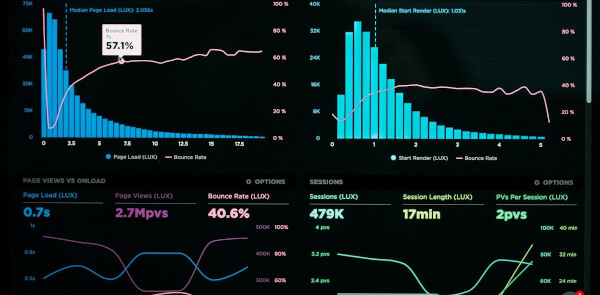
The best business decisions are backed by data. Companies that constantly collect, analyze, and proficiently store this are more likely to succeed in the long run.
An organization's database can be a direct source of revenue. Not only in the sense that data can be sold, but the insights produced can help the business too. Data about customer habits, market trends, etc., can enable a company to optimize its practices and find the most effective way to conduct tasks.
This is why carrying out data management and ensuring your database runs as efficiently as possible is crucial. In this article, we'll be exploring the five best ways to improve database performance monitoring.
What is database performance monitoring?
Database performance monitoring is a never-ending task. It's the process of continuously observing aspects of your database, conducting specific tests, and improving or amending faulty practices.
For example, say you're the owner of an e-commerce store. It's vital, in this scenario, for your database to be performing to its maximum capacity. Database failure can cause website accessibility and functionality issues, speed reductions, and, most importantly, will result in customers bouncing.
Keeping track of your frontend and backend metrics can alert you to these problems before they cause significant damage.
Why should you care about database performance monitoring?
Company leaders are constantly trying to find ways to optimize business practices, like working out who else they can market to or how to take better meeting notes (yes, they're still useful).
Monitoring your database performance should also be a priority. Here are a few reasons why:
- It enhances the customer experience. A slow database can have a ripple effect on the rest of your business. The majority of your processes are connected to your database. This is why identifying issues quickly can increase the chance of resolution before the problem reaches the customer.
- Increases company productivity. Whether it's an on-site or cloud-native database, any minor issue can affect your whole organization's operations. Having excellent database management and performance monitoring strategy can prevent this and allow your company to focus on their roles rather than recurring problems.
- Saves money. Database complications, as we mentioned above, can adversely impact both your customers and employees. This can directly harm revenue. Not only that but leaving data problems to fester can increase the resolution cost, as it may be more challenging to identify the root of the problem. So, maintaining and improving your database is key.
Let's have a look at the five best practices you can use to ensure proficient monitoring and optimization of your database performance.
1. Database availability monitoring
First of all, we have to ensure our database servers are accessible. Monitoring your MySQL or MSSQL servers availability, for example, will let you know the moment any of them becomes inaccessible so you can address the issues and continue the workflow with minimum downtime.
2. Database query monitoring
A database query is a process of requesting access to a specific dataset to observe, analyze, or manipulate it somehow.
Basically, a query is sent to your database each time a user logs into their account so their details can be correlated and reviewed. If this query is slow, it can greatly affect how well your applications perform.
This is why you must monitor queries. Here are four steps you can take:
- Identify your most important or frequent queries.
- Analyze these queries to find out which ones are the slowest.
- Run tests by tracking the time of each slow query.
- Use database performance tools that can audit and find solutions to these queries automatically in the future.
3. Database log monitoring
Think of a database log like a supermarket receipt. A receipt or log has two main purposes. Firstly, it can act as a record of history, such as what you bought or the actions you took. Secondly, it can act as evidence of a mistake. A receipt can let you know if you've been overcharged, and a database log can alert you to past failures.
Your log is one of the most effective ways to monitor database performance. It unifies data into one report and allows you to identify any major issues in the past. It can present information about requested data and how long each query took to run.
Of course, manually observing every data point associated with your business would be time-consuming. This is why you should use monitoring tools that automatically summarize the data, create trend reports, and produce visual elements such as graphs and charts.

4. Keeping track of insights
Producing and interpreting insights is common in business. For example, a company may want to know their most frequent point of contact with customers, such as an 800 number, email, social media, etc. This allows them to focus their efforts in the right direction. You also need to keep track of insights related to your database.
One of the biggest factors in database performance is CPU usage. High CPU utilization can affect whether data can be read and written. If your database isn't receiving the required amount of CPU power, the average query can transform into a slow query. Monitoring the metrics surrounding your database is essential to detect any potential performance issues.
5. Monitor implemented changes
The main advantage of databases is their adaptability and versatility. This means you have the option to add more to it or to change specific aspects. However, as much as improving your databases are necessary; it's crucial to monitor improvements too.
Changing a practice or adding data can be beneficial, but it can also adversely affect database performance. This is why constant monitoring of database changes is essential.
6. Examine throughput
Throughput is the ability for one infrastructure to send data to another, but there is a lot of confusion between throughput and internet connection speed. For example, say you wanted to carry out a Google Calendar download. The application size is 200Mb, and your internet speed is 40Mb/s. In theory, it should require five seconds to download.
Not always in practice, though. Throughput considers other factors. Monitoring it is crucial to ensuring your database can send data and queries to its full potential.
Conclusion
Having a healthy and high-functioning database can improve your business practices and customer experience and increase your revenue. This is why vigilant and consistent monitoring of your database performance and overall infrastructure monitoring is vital for business success.


 Copyright 2000-2025, WebSitePulse. All rights reserved.
Copyright 2000-2025, WebSitePulse. All rights reserved.